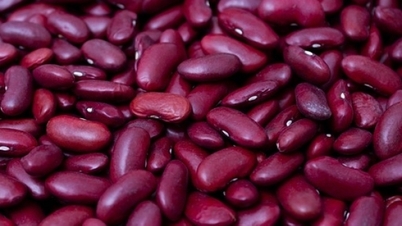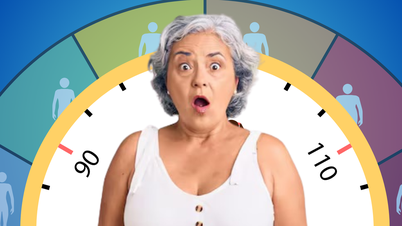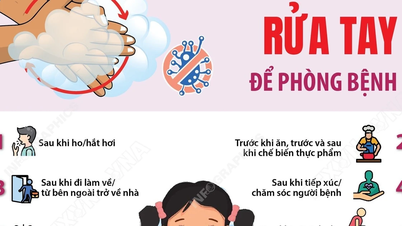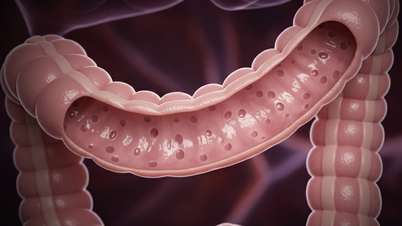Patient NTH (17 years old, in Hanoi ) had a history of good health and was suddenly hospitalized due to fainting and poor appetite. Through examining the patient, doctors from the Department of Emotional Disorders and Eating Disorders, Institute of Mental Health (Bach Mai Hospital), discovered that the patient had the following symptoms: limited energy intake, distorted perception and excessive concern about weight and body shape.
In just 6 months of dieting and intense exercise, patient H. lost from 62kg to 42kg. Although many people advised the patient to stop dieting and exercise more regularly, H. continued to eat very little, only a few spoonfuls of white rice at noon and evening, fasting in the morning, eating very little protein. The patient was afraid that if he did not maintain the same diet and exercise regimen, his weight would increase and he would become fat.
After being examined by a doctor, H. was diagnosed with Anorexia Nervosa, a dangerous eating disorder, and was treated as an inpatient at the Institute of Mental Health, with a regimen combining medication, individual psychotherapy, family therapy, and nutritional guidance.
After nearly 3 weeks of treatment, H. began to eat better, gradually reduced excessive exercise, gained weight, and stabilized his health. One month after being discharged from the hospital, H. no longer had the fear of gaining weight like before.
Dr. Ngo Tuan Khiem - Department of Emotional Disorders and Eating Disorders (Institute of Mental Health), said that almost every week and month, doctors examine and treat many cases of eating disorders in teenagers. Many young people are confusing moderate dieters with excessive dieters, even suffering from anorexia, in some cases binge eating and causing self-induced vomiting.
People with the disease often have to diet so much that they feel miserable, are always haunted by the thought that they are not beautiful, have to fast, exercise more intensely... these are signs of the disease and need to see a doctor.

The second case is a female patient LTL (18 years old, Hanoi) with bulimia nervosa. The patient once lost control of her eating, once eating up to 1.5 kg of french fries, pizza, and instant noodles in just a few hours, then self-induced vomiting and taking laxatives to “keep fit.”
Despite being aware of the consequences, L. still could not stop her cravings and became increasingly self-conscious and insecure about her appearance.
After being treated at the Institute of Mental Health with fluoxetine, cognitive-behavioral therapy and family therapy, L.'s binge eating episodes decreased by 40% and her self-induced vomiting behavior stopped. After a month of treatment, her weight decreased by 6kg and her mental state gradually stabilized.
Dr. Pham Thi Nguyet Nga - Institute of Mental Health, said that eating disorders are serious mental health conditions characterized by disturbed eating behaviors as well as related thoughts and emotions. Typically, people with eating disorders develop an excessive preoccupation with food and height, weight or body shape.
There are four main types of eating disorders: anorexia nervosa, bulimia nervosa, binge eating disorder, and other eating disorders.
Adolescence (ages 10-19) is a period of high risk for developing eating disorders due to many biological, psychological and social changes. Many people are dissatisfied with their body shape, always have a strong desire to lose weight, leading to anxiety, depression, obsessive-compulsive disorder, leading to low self-esteem, social anxiety, and academic pressure. These are factors that cause psychological pressure in adolescence.
Eating disorders in adolescents are not a choice or a lifestyle, but a serious but treatable medical condition. If the warning signs are detected early and the child is taken to the appropriate specialist facility, the disease can be completely treated and complications can be limited.
During treatment, doctors emphasize the key role of coordination between family, school and community, and emphasize proper communication, supporting children during meals and avoiding stigmatizing attitudes.
According to the National Institute of Mental Health, the prevalence of eating disorders in children and adolescents (ages 11-19) ranges from 1.2% (males) to 5.7% (females), with the prevalence increasing in recent decades. The period from mid- to late adolescence is the peak period for eating disorders and their symptoms. In the United States, adolescents (ages 13-18) have a prevalence of anorexia nervosa of 0.3%.
Mental health experts warn that it is developmentally normal for teenagers to be concerned about their appearance and body image, but significant weight loss or excessively restrictive eating habits are not a normal part of adolescence. Teens who exhibit such behavior should be evaluated for serious conditions such as eating disorders./.
Source: https://www.vietnamplus.vn/canh-bao-an-kieng-qua-muc-dan-toi-benh-ly-nghiem-trong-o-thanh-thieu-nien-post1070081.vnp



































![[Photo] Ready for the 2025 Fall Fair](https://vphoto.vietnam.vn/thumb/1200x675/vietnam/resource/IMAGE/2025/10/14/1760456672454_ndo_br_chi-9796-jpg.webp)













































































Comment (0)